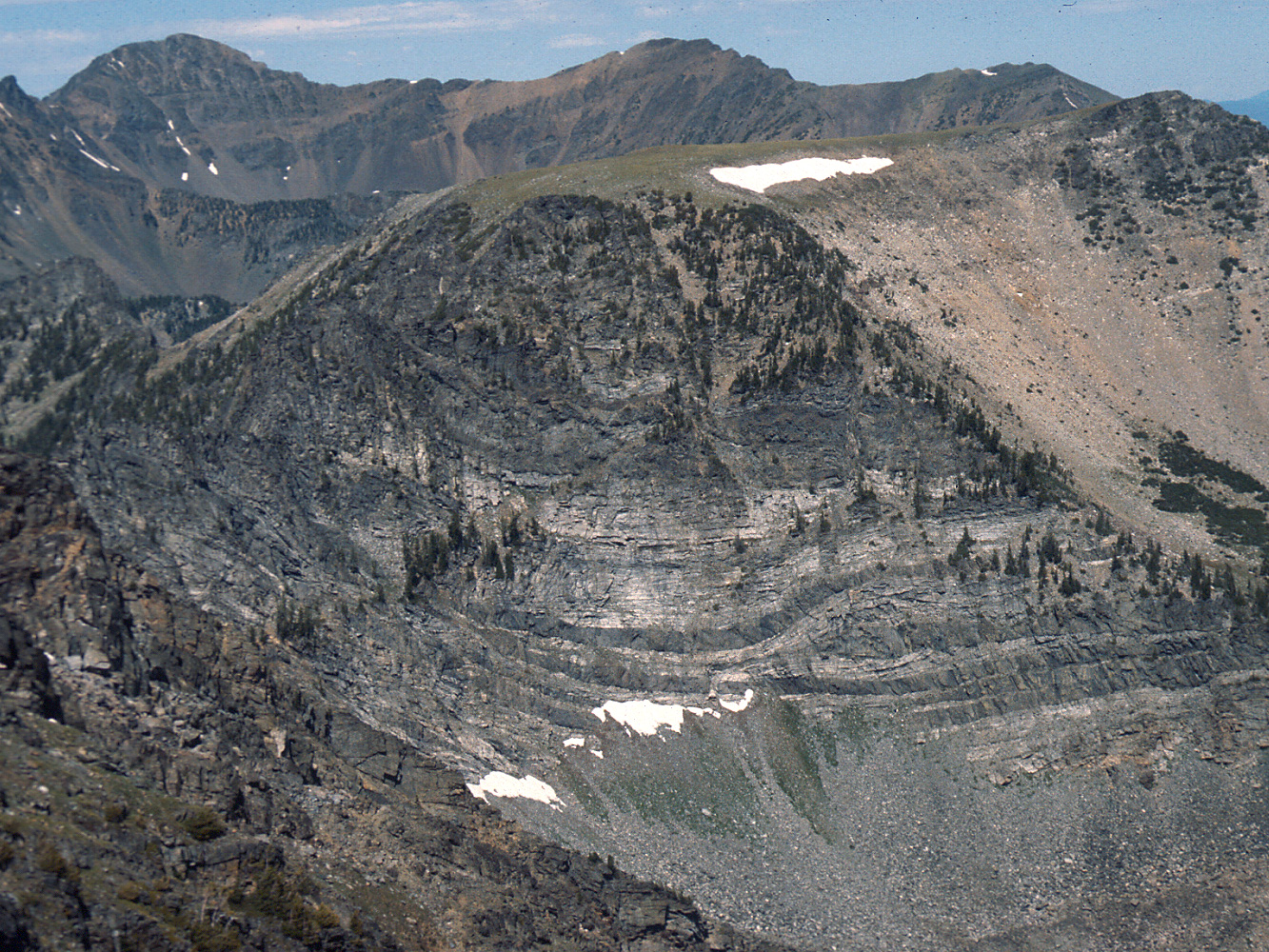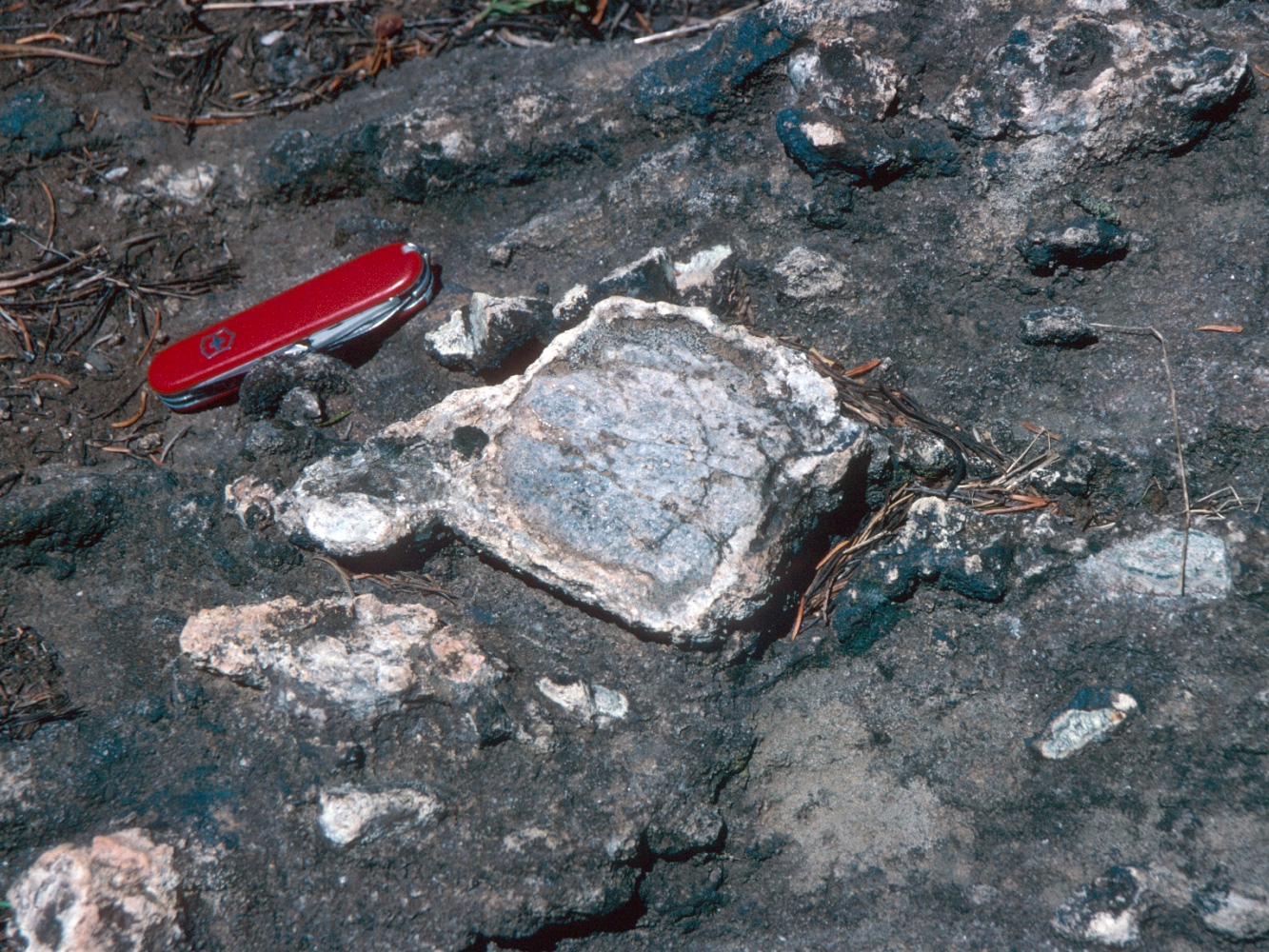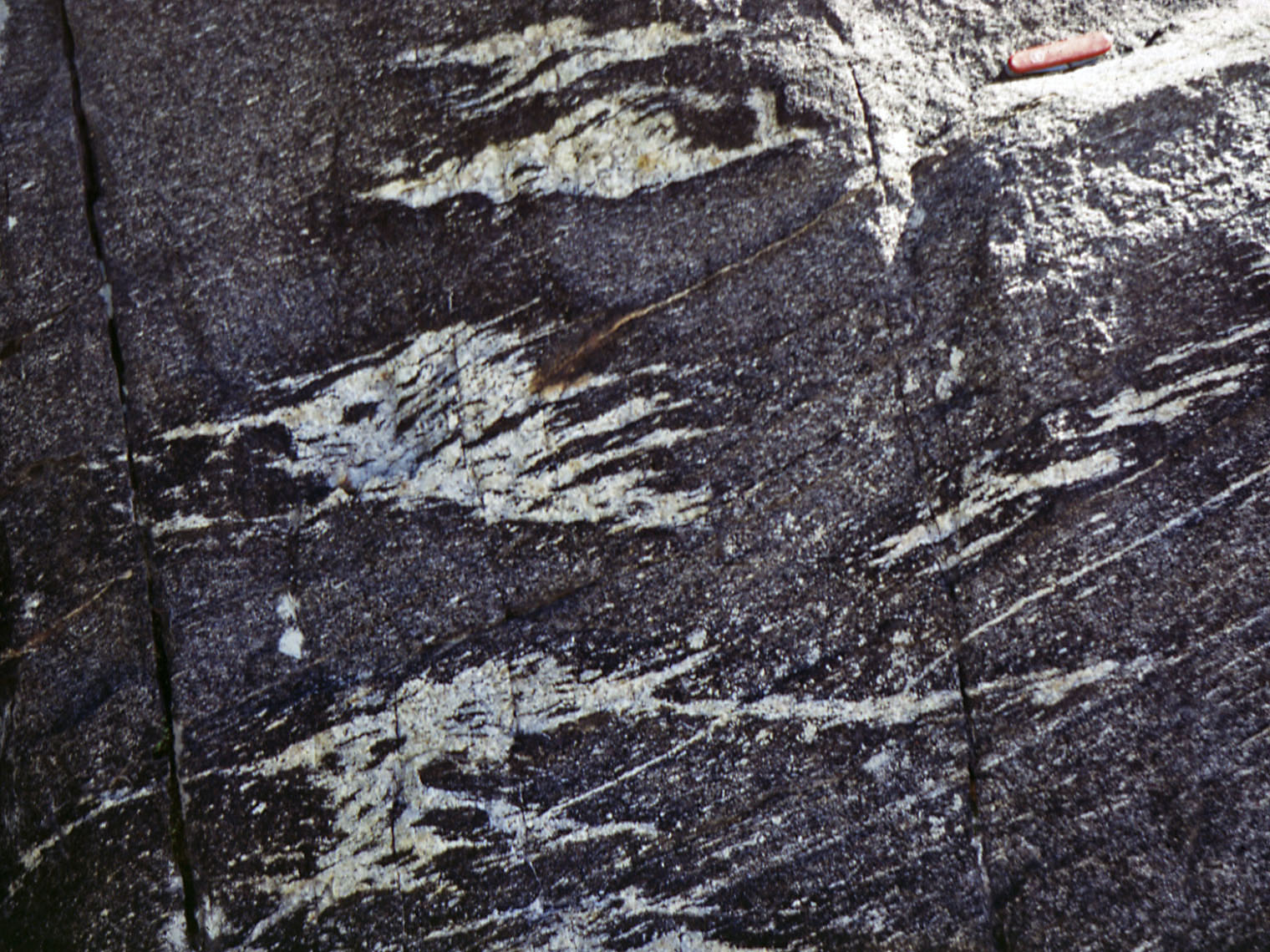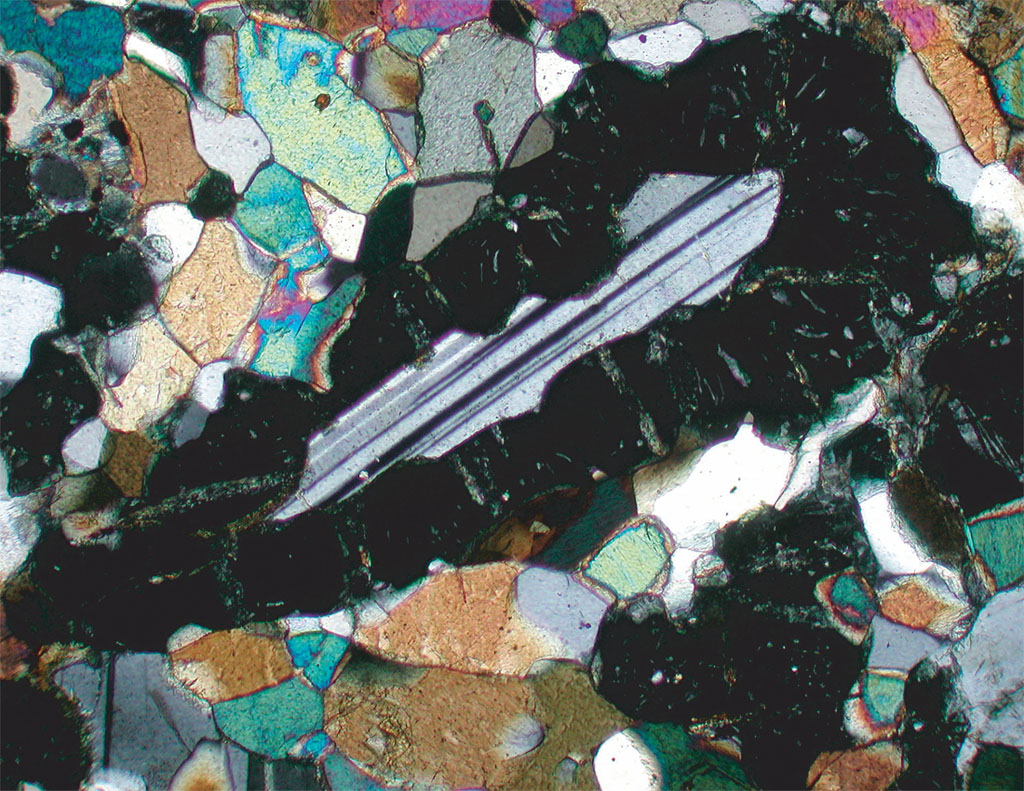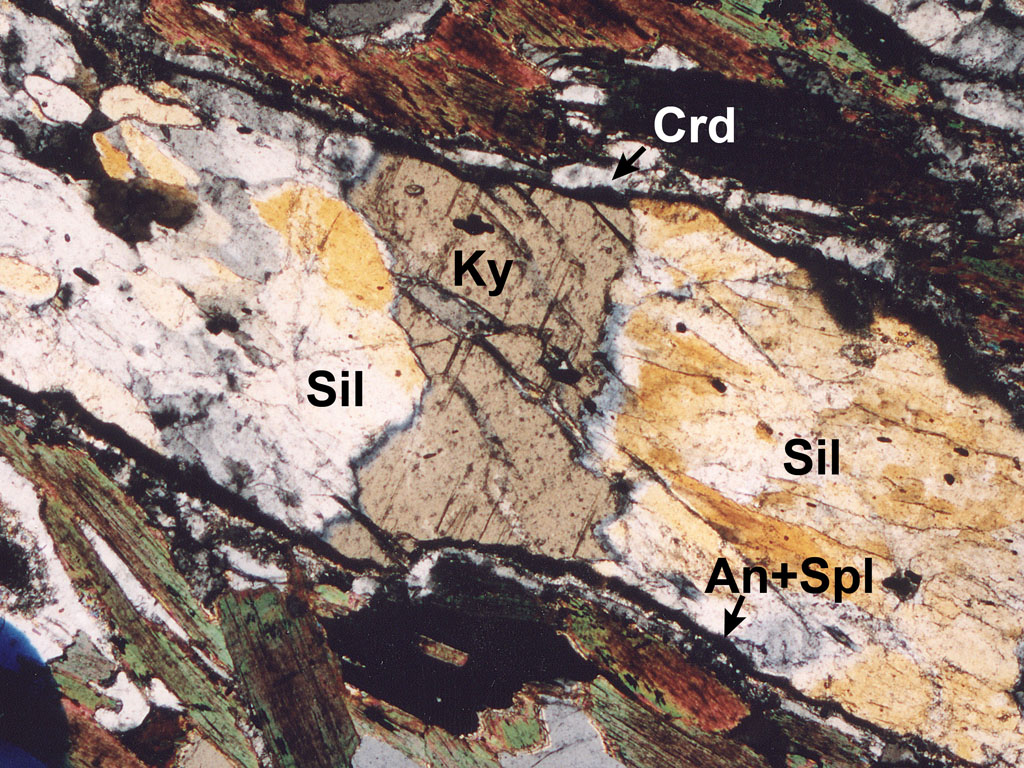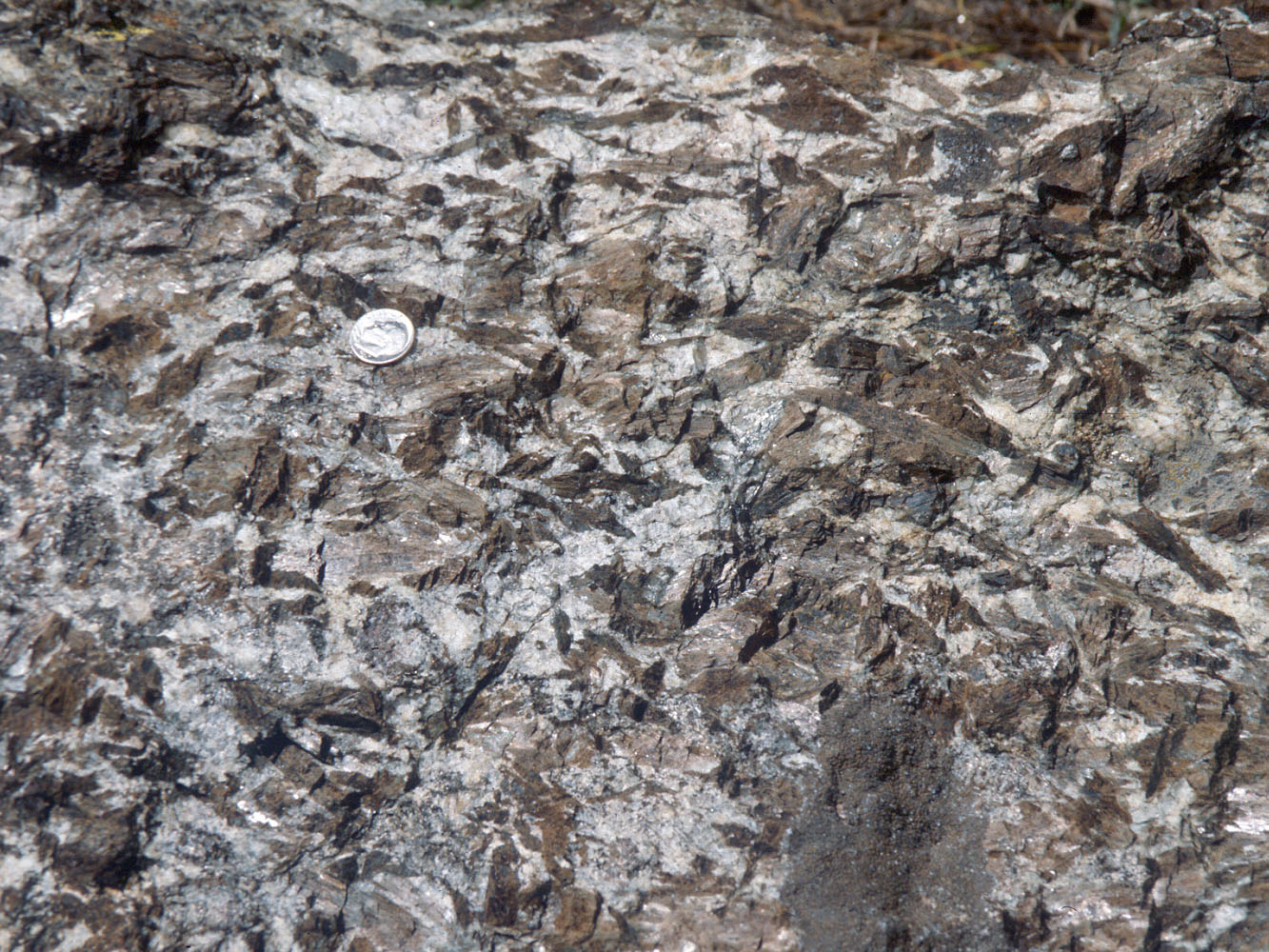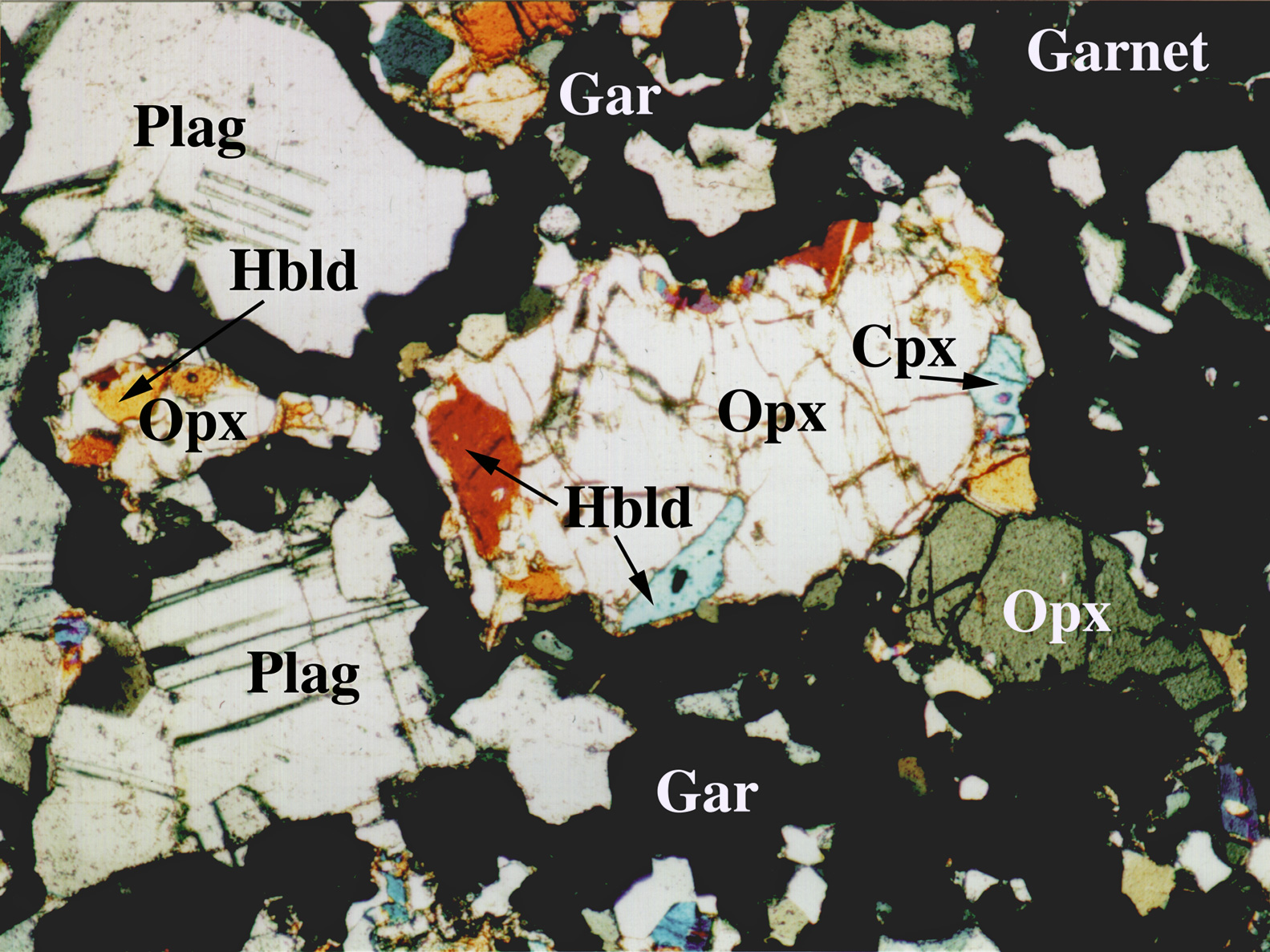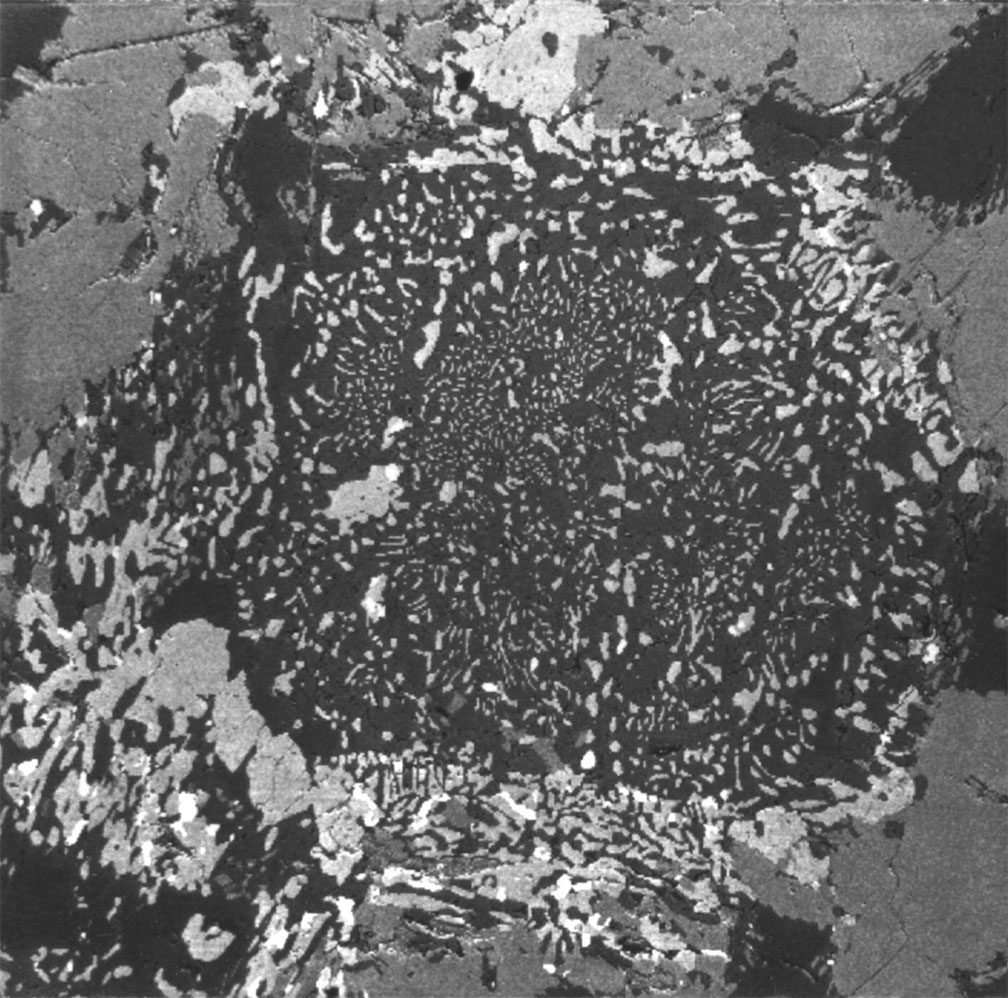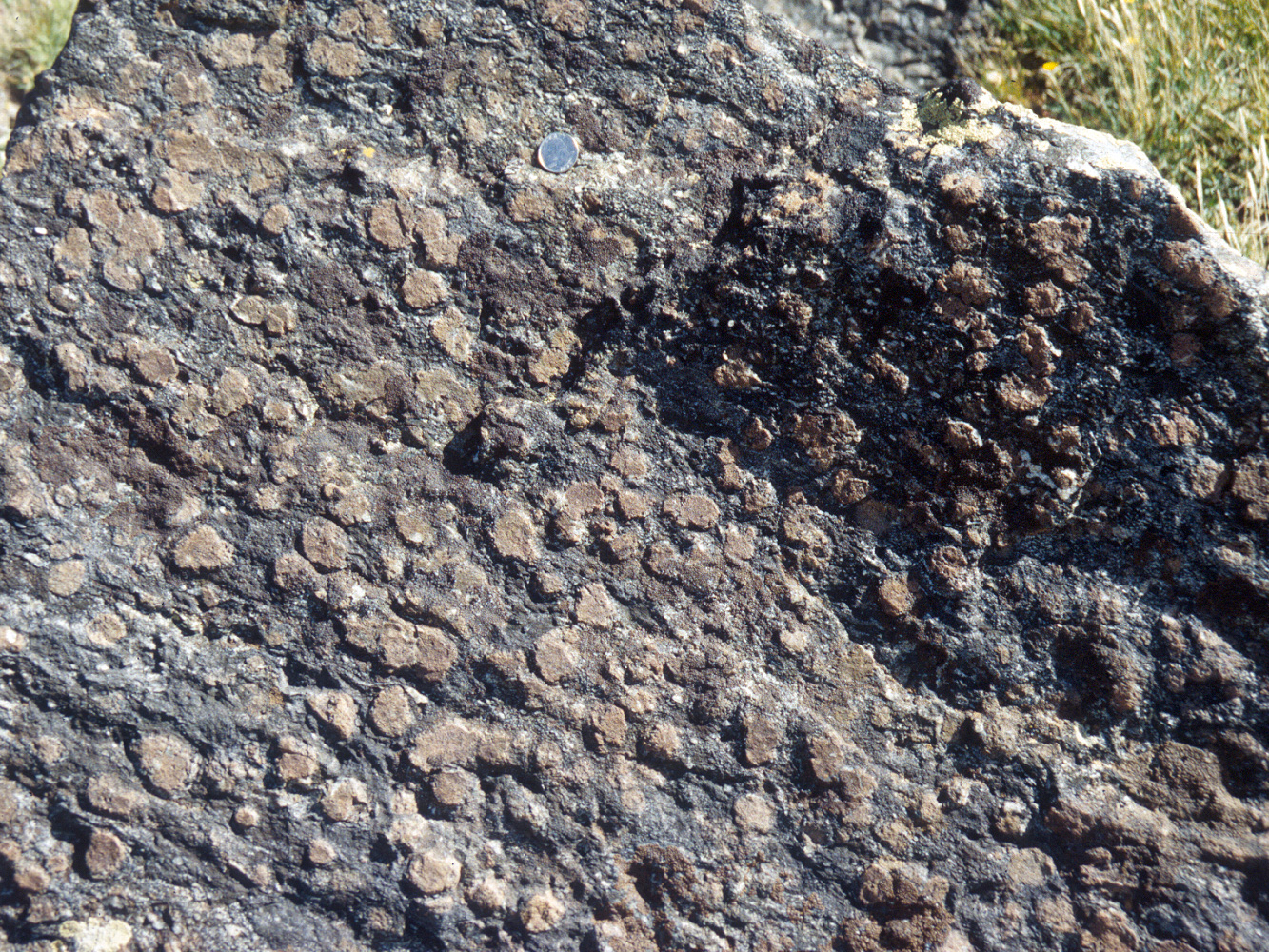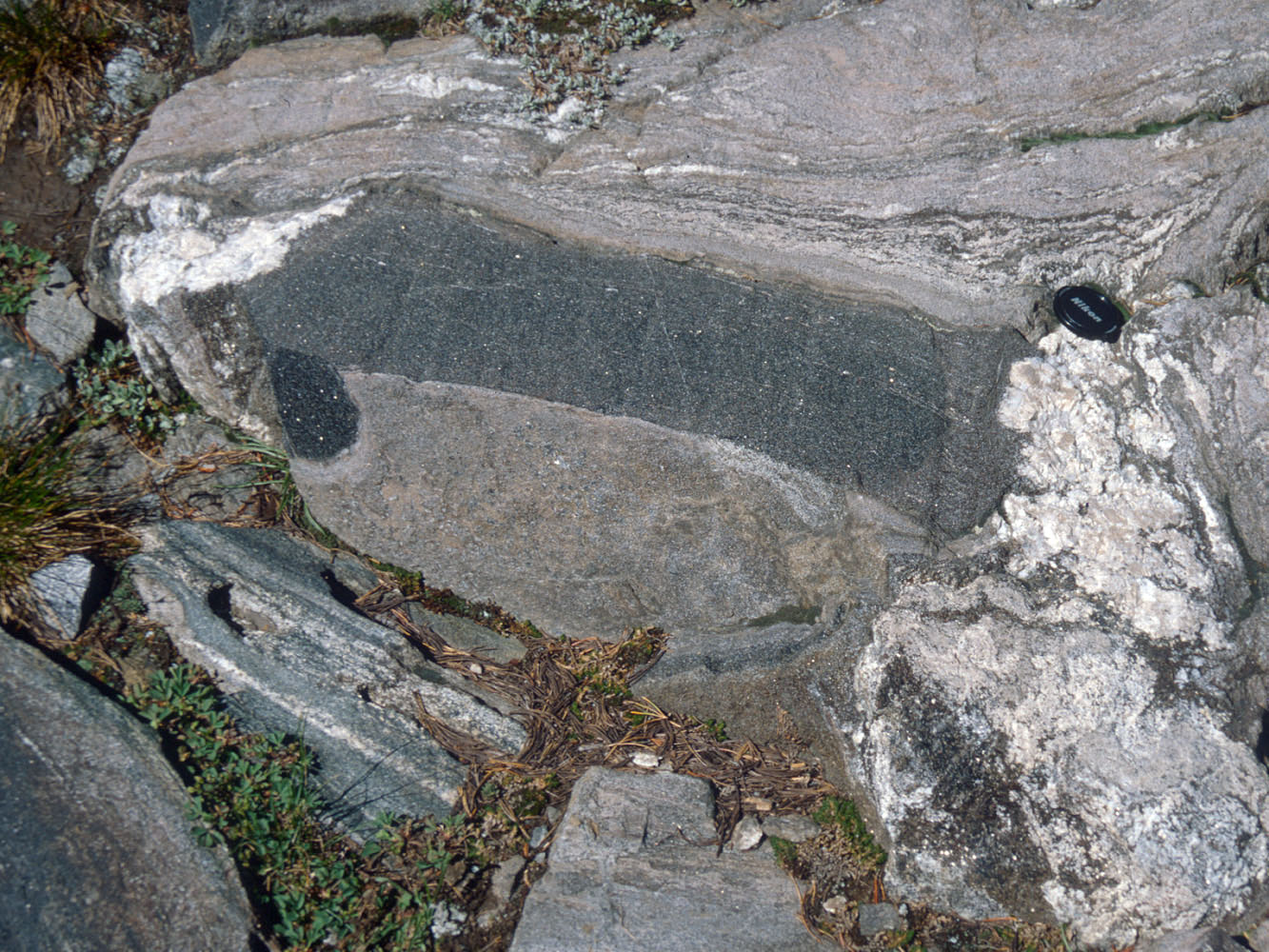6.9 Pressure-Temperature-time (P-T-t) Paths
Modern geochronological techniques enable age determinations for individual mineral grains or even small regions of zoned mineral grains. For some minerals, isoptopic systems, and P-T paths the radiometric clock records the time of growth of the grain and is not modified by changing physical conditions. Zircon (Zrn) and monazite (Mnz) are minerals that are good at preserving growth ages using U and Th isotopes, in part because of the very slow diffusion rates of those elements in these minerals. For other minerals, isoptopic systems, and P-T paths the radiometric clock records the time at which the mineral cools below a "closure temperature," the temperature below which the age no longer changes by diffusional loss or exchange. Amphiboles and micas are minerals used for K/Ar dating that record the time the temperature falls below a closure temperature for the diffusional loss of Ar (~500°C for hornblende; ~350°C for biotite).
Move the slider to see an example of a P-T-t path on the T-P diagram above. The path is based on evidence from rocks of a variety of bulk compositions that outcrop in the high peaks of the Tobacco Root Mountains, in SW Montana, USA. As you move the slider, different parts of the P-T-t path are shown along with some of the evidence used to construct the path. The evidence for pressures and temperatures includes mineral assemblages (e.g. Ky+Opx), rock textures (migmatites), and reaction textures (pseudomorphs, reaction bands). The evidence for timing includes growth ages in context (Zrn in partial melt leucosomes, Mnz included in Ky, Mnz in pseudomorphs) and cooling ages (Hbl cooling through 500°C). Although no one rock contains evidence for the entire path, physical proximity and similar structural features are consistent with a similar P-T-t history. Tectonic interpretations of the P-T-t path are also given. For more infomation about these rocks and how the P-T-t path was determined, read Cheney et al. (2004) and the other individual papers in Brady et al. (2004).
